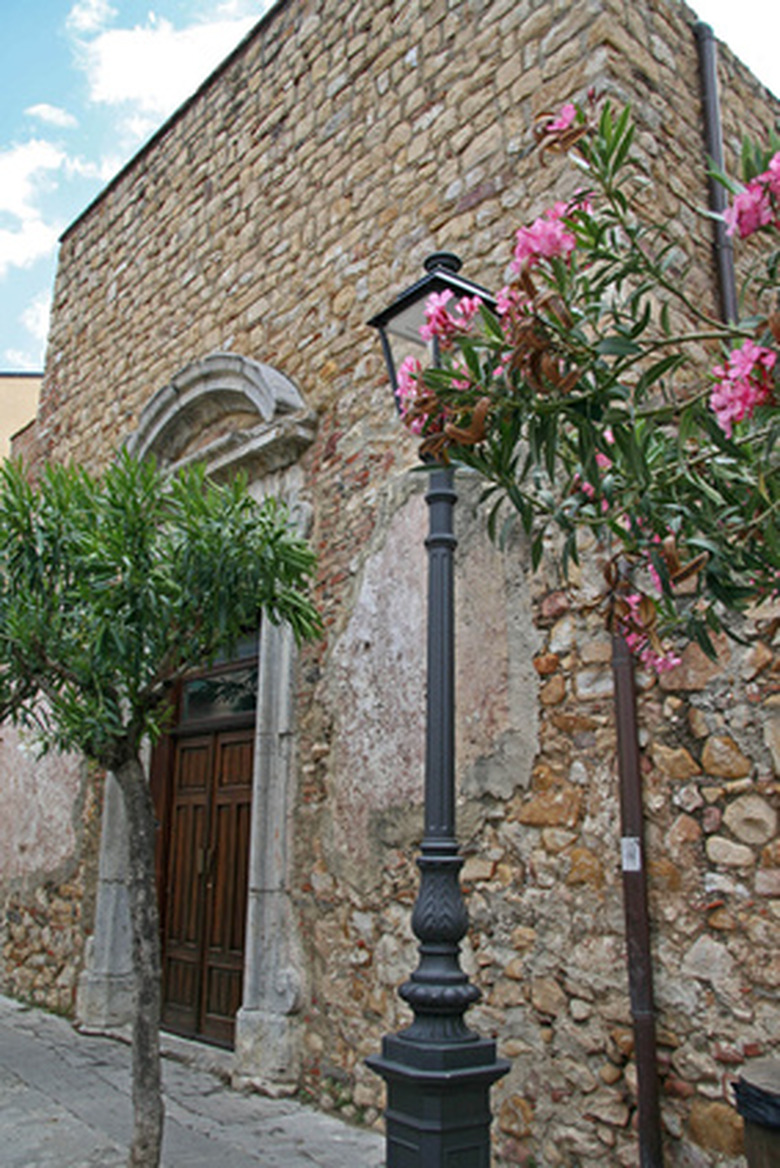Purple Flowering Trees In Texas
Gardeners in Texas enjoy various growing climates. While central Texas sees hot and humid summers, north Texas gardeners must face cold, dry winters. The state lies in U.S. Department of Agriculture (USDA) Hardiness Zones 6 to 9. Texas gardeners should select a tree according to the USDA zones as well as the tree's flower color, bloom time and general culture. Various purple flowering trees perform well in Texas home gardens.
Texas Redbud
The Texas redbud tree (Cercis canadensis var. texensis) belongs to the pea family (Fabaceae) and thrives in the foothills and canyons of north central Texas. This perennial redbud variety only reaches 10 to 20 feet in height. The Texas redbud features heart-shaped, blue-green leaves that turn red and gold tones in autumn. Purple flower clusters bloom in March and April, followed by red-purple fruit pods that add color to the winter landscape. Texas redbuds like dry, clay or rocky soils in partly shady to fully sunny locations. Texas gardeners often use the Texas redbud as an accent tree or an understory tree.
- Gardeners in Texas enjoy various growing climates.
- The Texas redbud features heart-shaped, blue-green leaves that turn red and gold tones in autumn.
Texas Mountain Laurel
The Texas mountain laurel (Sophora secundiflora), an evergreen in the Fabaceae plant family, grows 10 to 30 feet tall. This laurel variety features shiny, green foliage and strongly fragrant blossoms. Lavender to violet-blue flower clusters bloom in February and March, giving way to fruit pods containing poisonous red seeds. This perennial tree prefers dry, well-drained soils in part-shade to full-sun positions. The Texas mountain laurel works well as an ornamental tree in gardens and lawns.
Texas Lignum-Vitae
The Texas lignum-vitae (Guajacum angustifolium), also called the guayacan tree, is an evergreen in the creosote-bush family (Zygophyllaceae). Purple flowers appear from March through May, attracting large numbers of honeybees. The blossoms give way to heart-shaped fruit pods that contain red seeds. This tree is also called the soapbush because people once used the bark to wash wool clothing. This small perennial tree only reaches 3 to 6 feet in height and prefers dry soils in partial shade. The Texas lignum-vitae naturally occurs in meadows, prairies and pastures across Texas.
- The Texas mountain laurel (Sophora secundiflora), an evergreen in the Fabaceae plant family, grows 10 to 30 feet tall.
Pawpaw
The pawpaw tree (Asimina triloba), also called the wild banana, belongs to the Annonaceae plant family and thrives in the rich, moist soils around the Piney Woods in east Texas. This tree features large, aromatic leaves that turn soft yellow shades in the fall. The pawpaw also features purple to maroon flowers that bloom in April and May, followed by sweet, black berries that ripen in autumn. Mature pawpaw trees typically grow to 30 feet in height and 20 feet in width. This perennial tree prefers acidic soils in partially sunny to fully sunny locations. Texas gardeners often use the pawpaw as an understory tree.
Desert Willow
The desert willow (Chilopsis linearis), also called the flowering willow, belongs to the Bignoniaceae family and reaches between 15 and 40 feet in height. This tree features pale green leaves and trumpet-shaped, purple flowers with yellow throats. These flowers smell like violets and bloom April through September. Blossoms give way to brown or green seedpods that attract wild birds. The flowering willow tree naturally occurs along ditches, riverbanks, ravines and streams in south central and west Texas. This willow variety prefers limestone soils but tolerates sandy, clay and loamy soils. Texas gardeners often use the desert willow as an ornamental lawn tree.
- The pawpaw tree (Asimina triloba), also called the wild banana, belongs to the Annonaceae plant family and thrives in the rich, moist soils around the Piney Woods in east Texas.
